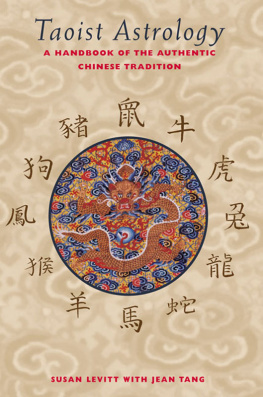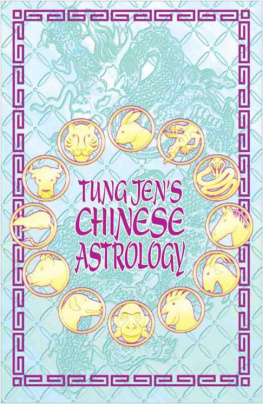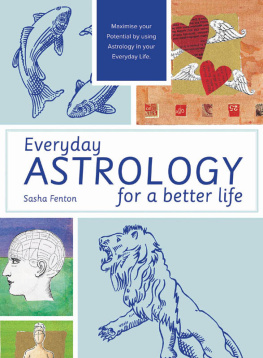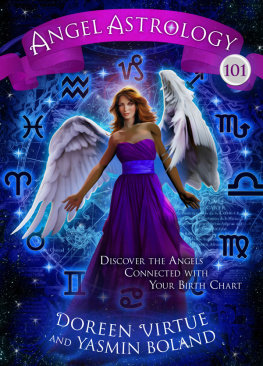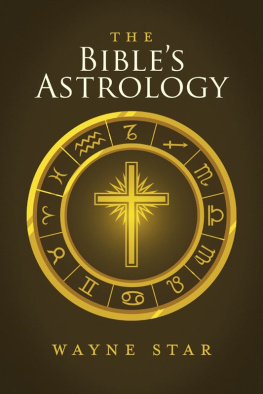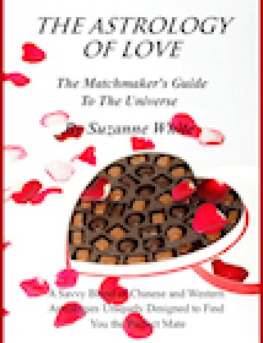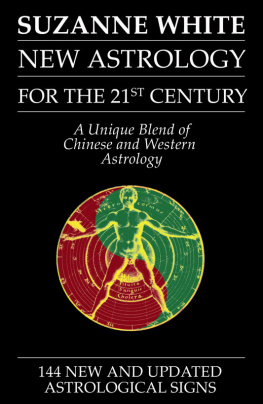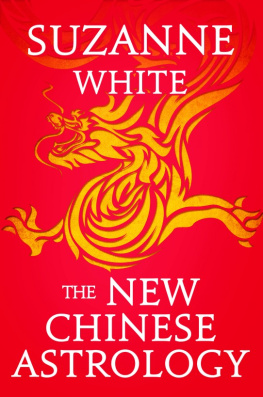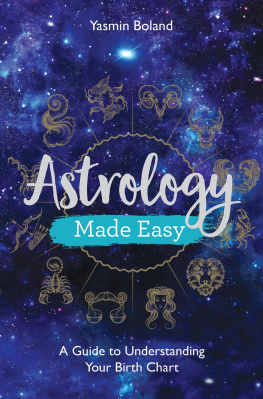Taoist Astrology
A HANDBOOK OF THE AUTHENTIC CHINESE TRADITION

SUSAN LEVITT WITH JEAN TANG

DESTINY BOOKS
ROCHESTER, VERMONT
ACKNOWLEDGMENTS
Thank you to our youngest sisters, Char Dog and Little Pig, for their love, understanding, and kindness. Gratitude to editor Chuck Gutro, the quintessential Tiger, for his enthusiasm and dedication. Appreciation to three wise men at Destiny Books: green Horse Jon Graham, yellow Monkey Rowan Jacobsen, and gold Ox Ehud Sperling.
What is the greatest fire?
Greed.
What is the greatest crime?
Hatred.
What is the greatest sorrow?
Separation.
The greatest sickness?
Hunger of the heart.
And the greatest joy?
The joy of freedom.
Freedom from desire.
Freedom from possessions.
Freedom from attachment and appetite.
How does one meet suffering?
By pursuing happiness.
Speak and act with a pure heart and mind
and happiness will follow you like a shadow, unshakable.
from Journey to the West
ONE
Taoist Astrology

THE WAY OF THE TAO
Everywhere on our planetfrom the pyramids of Egypt to the monoliths of Stonehenge in England, to the observatory in the forbidden city of Beijingancient people looked up to the night sky. Astrologers observed planetary motion and cycles of the moon and predicted events that paralleled celestial movements.
The ancient Chinese people developed their science of astrology based on their unique spiritual view of the world. The ancient ones studied nature to make sense of the universe. They observed the sky above and the earth below. Through nature they saw growth and decay, death and renewal, strength and life. The complementary structure of the natural order became the religion of Taoism (pronounced Dowism). Priests of Taoism, who were both female and male, discovered and developed astronomy, alchemy, geometry, anatomy, herbology, crafts, and animal domestication.
In the distant past, humanitys relationship with animals was necessary for survival. When animals were domesticated, Taoist priests observed the animals traits. Over the centuries, the priests developed a system of twelve animals for a twelve-year cycle. Human physical and temperamental attributes correlated with certain years. This system became the twelve earthly branches. In the year 2637 B.C., the Chinese Emperor Huang Ti standardized this Taoist twelve-year calendar, which has been in continuous use ever since.

According to the ancient Taoists, all of life is interconnected. This connection, the Tao, is symbolized by the familiar image known as yin and yang. Traditionally, yin is the dark, feminine, and receptive principle. Yang is the light, masculine, and active principle. Together, yin and yang flow endlessly into each other. Each creates and defines the others opposite. Without the existence of dark, the concept of light would have no meaning. Similarly, high is defined by low, and sweet is defined by sour.
In western thought, the balance of yin and yang could be seen as conflicting opposites. Yet in Taoist thought there is no such antagonism. Yin is considered the dark side of the mountain. Yang is considered the light side of the mountain. Yet it is still the same mountain.
Even today yin and yang remain the natural order of the universe because the yin and yang cycle repeats endlessly. For example, high noon, the most yang time, progresses to midnight, the most yin hour. Summer solstice, the longest day, is the most yang time of the year. It progresses to winter solstice, the longest night, which is the most yin. Even in our bodies we experience the endless dance of yin and yang. As we inhale our lungs expand to the most yang point, and when we exhale they contract to the most yin point.
Diet and climate are also classified as yin and yang. For example, Native American Inuit people of the polar regions live in a cold yin environment. Their yin weather is balanced by eating a yang diet of raw meat. People living in the hot yang tropics stay healthy by eating a diet of yin fruit.
All of us have both yin and yang qualitieslife is a balance of yin and yang. Death occurs when yin and yang separate. Here is a short list of some of the many qualities of the Tao:
Yin | Yang |
female | male |
moon | sun |
water | fire |
dark | light |
cold | hot |
wet | dry |
slow | fast |
passive | aggressive |
receptive | assertive |
round | angular |
smooth | rough |
intuition | intellect |
below | above |
earth | heaven |
The Taoist philosopher Lao-tzu, born in 604 B.C., was the author of the Tao Te Ching, the book of the Tao. Lao-tzu distilled Taoist wisdom into eighty-one short chapters of verse. He understood that we can live in perfect grace, truth, and harmony by accepting the changes of life, just as the natural world acquiesces to the changes in nature. There is no concept of sin, and evil is not condemned. Lao-tzus view was that a good man was a bad mans teacher, and that teaching a bad man was a good mans responsibility. Lao-tzu explained the harmonious yet dualistic principles of yin and yang:
When some things are deemed beautiful,
other things become ugly.
When things are deemed good,
other things become bad.
Existence and nonexistence create each other.
Difficult and easy produce each other.
Long and short are fashioned from each other.
High and low contrast each other.
Before and behind follow each other.
Taoist culture existed for thousands of years before the first Chinese dynasty (the Shang, circa 1523 to 1027 B.C.). The first dynasty was formed during the Bronze Age when the arts of metallurgy were developed and refined. The ancient Shang people also created a pictographic script with which to express abstract ideas. Archeological discoveries unearthed many inscribed bones that were used for divination, indicating the spiritual and mystical values of the Shang times.
Many centuries later, the religions of Confucianism and Buddhism became part of Chinese culture. Confucianism was based on the teachings of the Chinese scholar Confucius (circa 551 to 479 B.C.). Buddhism came to China from India in the year A.D. 68.
About 1027 B.C. the Shangs were overthrown by the Chous, who established their own dynasty. But political trouble and social unrest existed during the end of the Chou dynasty (1028 to 256 B.C.). The Chou empire declined due to warring feudal states within the Chou feudal system. But the Chou dynasty was also a time of great intellectual and artistic ferment. Taoist philosophers from the late Chou period (600 to 222 B.C.) include Lao-tzu and Mo Ti (born circa 500 B.C.), the teacher of universal love. The third great Chou philosopher was Kung-tzu, or Confucius (circa 551 to 479 B.C.).
Next page
